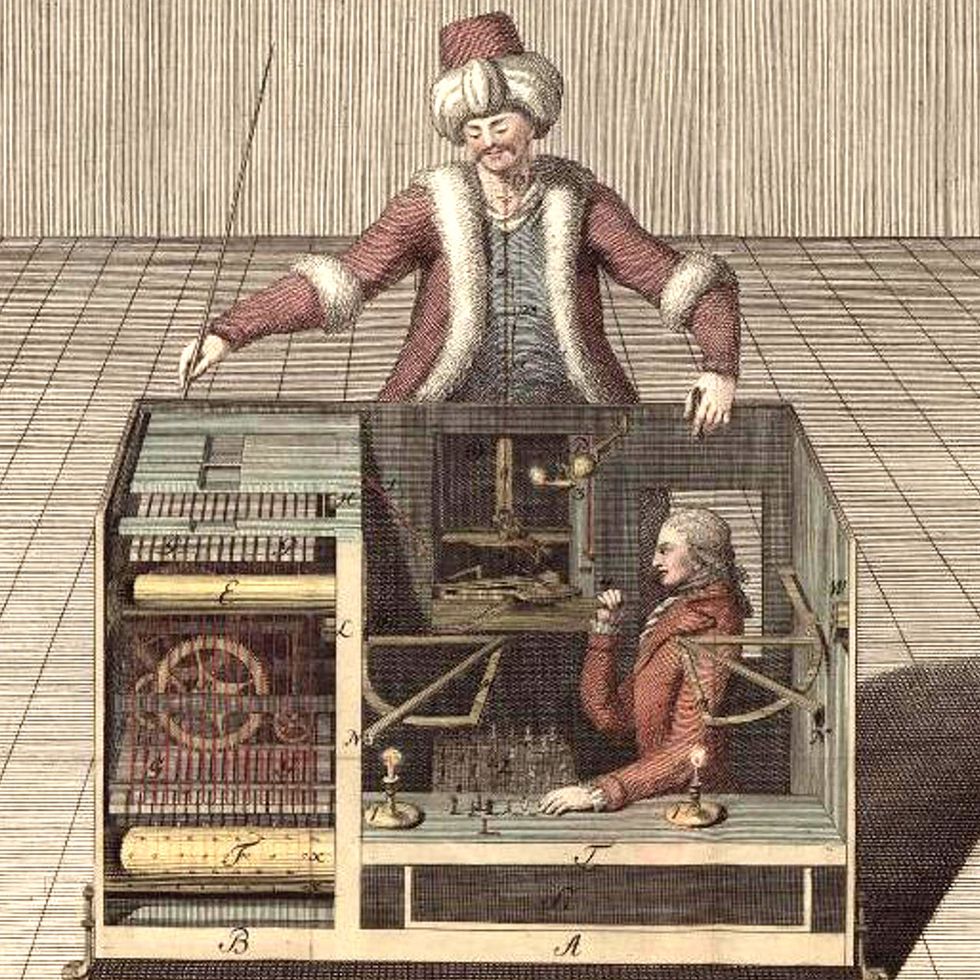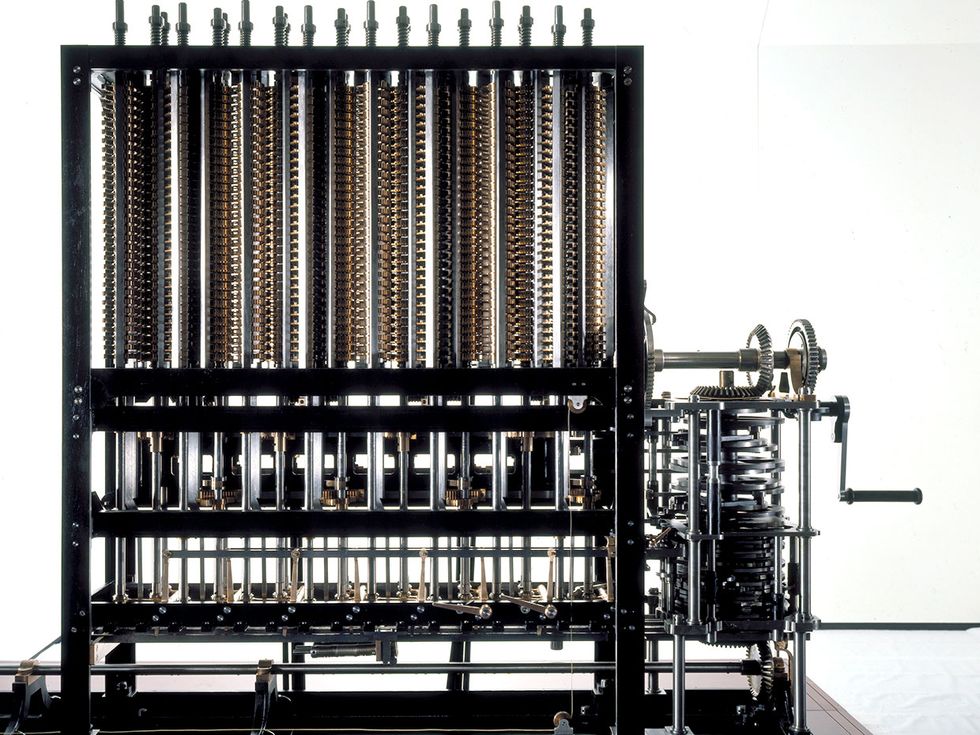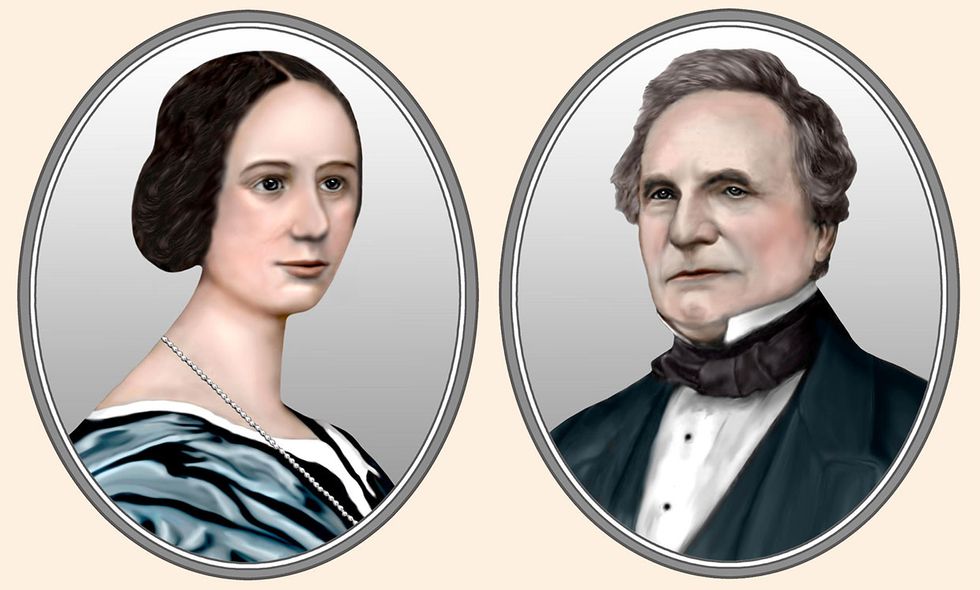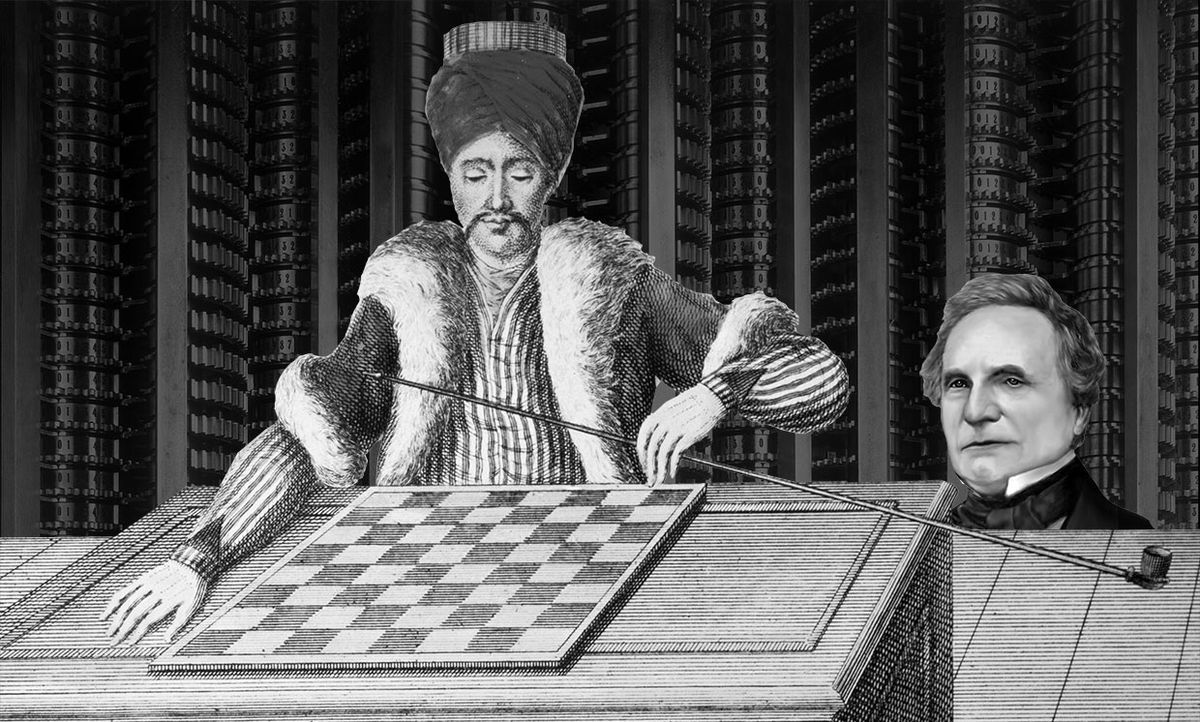The history of AI is often told as the story of machines getting smarter over time. What's lost is the human element in the narrative, how intelligent machines are designed, trained, and powered by human minds and bodies.
In this six-part series, we explore that human history of AI—how innovators, thinkers, workers, and sometimes hucksters have created algorithms that can replicate human thought and behavior (or at least appear to). While it can be exciting to be swept up by the idea of superintelligent computers that have no need for human input, the true history of smart machines shows that our AI is only as good as we are.
Part 1: Charles Babbage and the Turk
In the year 1770, at the court of the Austrian empress Maria Theresa, an inventor named Wolfgang von Kempelen presented a chess-playing machine. The Turk, as Kempelen called his invention, was a life-size automaton carved out of maple wood, dressed in Ottoman robes, sitting behind a wooden cabinet with a chessboard on top.
Kempelen claimed that the machine could defeat any member of the court, and one of Maria Theresa's advisers took up the challenge. Kempelen opened the doors of the cabinet to show a clockwork-like mechanism—an intricate network of levers and cogs—and then inserted a key into the machine and wound it up. The automaton came to life, lifting its wooden arm to move the first chess piece. Within 30 minutes, it defeated its opponent.
The Turk was a sensation. Over the next decade, Kempelen toured the chess-playing machine through Europe, defeating some of the most formidable minds of the time, including Benjamin Franklin and Frederick the Great. On von Kempelen's death in 1804, the Turk was purchased by Johann Nepomuk Maelzel, a German university student and instrument builder, who continued the world tour.
One man who was given the opportunity to see the machine up close was Charles Babbage, the famed British engineer and mathematician. In 1819, Babbage played the Turk twice and lost both matches. According to Tom Standage, who has written an extensive history of the Turk, Babbage suspected that the automaton was not “intelligent" but merely an elaborate hoax, concealing a person who was, somehow, controlling the Turk's moves from the inside.

Babbage was right. The reality behind the Turk's clockwork façade was this: Kempelen and Maelzel hired chess masters to sit hidden inside the large cabinet. The chess master could observe what was happening on the chess board above via magnets, which provided a mirror image of the board underneath the table.
To move the Turk's arm, the concealed player used a pantograph—a system of pulleys that synchronized his arm movements with the wooden Turk sitting above. The player moved a lever across his magnetic chess board, twisted it to open and close the Turk's fingers, and then moved the piece to its desired place. The chamber in which the chess master sat had a number of sliding panels and a rolling chair that moved on greased rails, allowing him to slide back and forth as Maelzel opened the Turk for observation.
While Babbage suspected such trickery, he didn't take the time to write an exposé, as some of his contemporaries did. But his encounter with the Turk seems to have percolated in his mind in the years following.

Very shortly after, he began work on a design for an automatic mechanical calculator called the Difference Engine, which he wanted to use to generate error-free tables of logarithms. His first design for this machine, which would have weighed about 4 tons, called for some 25,000 metal parts. But he abandoned the project in the 1830s to begin work on an even more complex apparatus called the Analytical Engine. This machine had a “store" and a “mill" that functioned as memory and processor, as well as the capacity to interpret programming instructions via punch cards.
Babbage initially imagined that the Analytical Engine would simply function as an updated version of the Difference Engine. But his collaborator, Ada Lovelace, realized that the engine's programmability gave it generalizable functionality. She stated that the machine would give rise to a whole new type of “poetical science," whereby mathematicians would teach the machine how to perform tasks by programming them. She even predicted that the machine would thus be able to compose “elaborate and scientific pieces of music."

Babbage eventually shared Lovelace's vision, and imagined the world-changing potential of a general-purpose machine that could do much more than crunch numbers. Tellingly, his mind went back to his encounter with the Turk. In 1864, he wrote in his diary about his desire to use “mechanical notation" to tackle an entirely new kind of challenge. “After much consideration I selected for my test the contrivance of a machine that should be able to play a game of purely intellectual skill successfully such as…chess."
While there is no technological link between the Turk and Babbage's Engine, the possibility of machine intelligence embodied by von Kempelen's hoax seems to have inspired Babbage to think about machines in entirely new ways. As Babbage's collaborator Sir David Brewster later wrote of the Turk: “Those automatic toys which once amused the vulgar, are now employed in extending the power and promoting the civilization of our species."
Babbage's encounter with the Turk at the very beginning of computing's history serves as a reminder that hype and innovation sometimes go hand in hand. Yet it also teaches another lesson: The intelligence attributed to machines almost always relies on rendering human skill invisible.
This is the first installment of a six-part series on the untold history of AI. Come back next Monday for Part 2: “ENIAC's Invisible Women Programmers."



